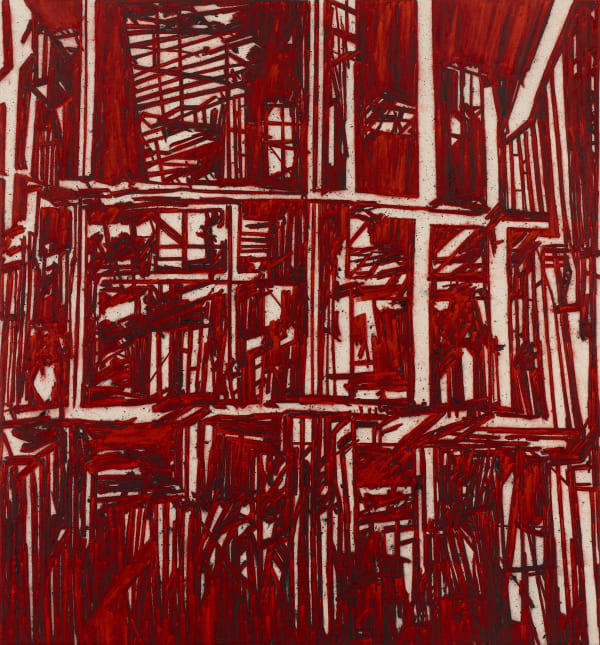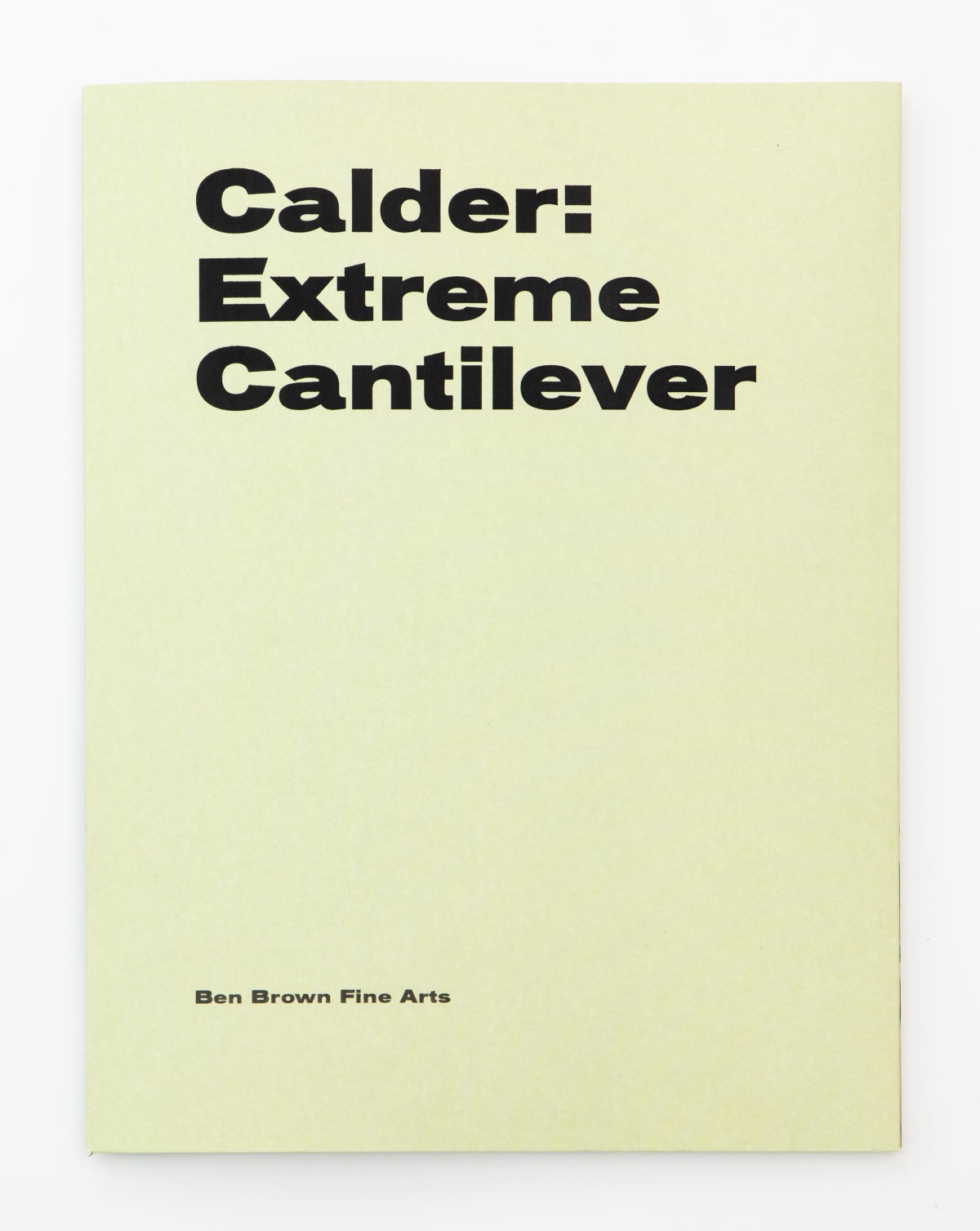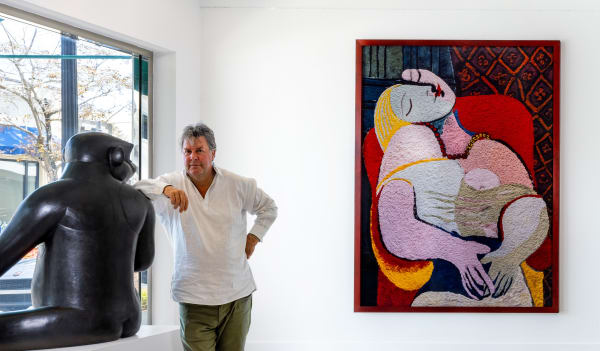Alexander Calder is internationally celebrated for his groundbreaking kinetic mobiles and static stabiles – ingenious sheet metal sculptures that range from intimate to monumental in scale. The son of artists, Calder began making art at a young age. After earning a degree in engineering, he moved to New York in 1923 to study at the Art Students League. In 1926, he relocated to Paris to continue his training at the Académie de la Grande Chaumière.
During this period, Calder began working with wire, crafting linear portraits of friends and cultural figures. These early works brought him recognition, leading to exhibitions in New York, Paris, and Berlin. In 1931, he created his first kinetic sculptures – initially motorised, but soon animated by natural air currents – ushering in the era of his iconic suspended mobiles. After returning to the United States in 1933, Calder began producing large-scale, bolted sheet metal sculptures for outdoor settings.
His work gained attention at the Pierre Matisse Gallery in New York and led to numerous public commissions. During the war years, Calder turned to more readily available materials – wood and wire – to create his delicate Constellations. From the 1940s onwards, he focused increasingly on large-scale commissions and significant museum exhibitions, working closely with long-time dealers Curt Valentin and later Perls Galleries in New York, as well as Galerie Maeght in Paris.
Calder was honoured with major retrospectives during his lifetime, including at the Museum of Modern Art, New York (1943); the Guggenheim Museum, New York (1964); Fondation Maeght, Saint-Paul-de-Vence (1969); and the Whitney Museum of American Art, New York (1976). His work is held in leading public and private collections worldwide, including Tate Modern, London; the Museum of Modern Art (MoMA), New York; Centre Pompidou, Paris; and the National Gallery of Art, Washington, D.C.
-

Calder: Extreme Cantilever
9 Oct - 22 Nov 2024 LondonBen Brown Fine Arts is delighted to present Calder: Extreme Cantilever, an unprecedented exhibition that brings together for the first time Alexander Calder’s three cantilever sculptures, alongside a curated selection of oil paintings, works on paper, and historically significant artifacts. This exhibition illustrates a pivotal shift in Calder’s formal and conceptual approach to spatial abstraction amid the global upheaval of the Second World War. On loan from the Calder Foundation and esteemed private collections, Calder’s three standing mobiles – Extreme Cantilever, More Extreme Cantilever, and Extrême porte à faux III – showcase the artist’s unbridled imagination and intuitive genius that cement him as one of the 20th century’s foremost innovators.Read more -

Beyond the Canvas
8 - 30 Mar 2024We are thrilled to announce Beyond the Canvas opening March 7, 2024. Join us for an exclusive presentation featuring new works by gallery artists, including Awol Erizku, Yoan Capote, and Ena Swansea, alongside a curated selection highlighting influential post-war masters. Additionally, we will also present a captivating selection of artist and independent designer jewellery from Louisa Guinness Gallery. Beyond the Canvas invites us to reconsider the notion of representation, delve into the layers of artistic expression and discover new perspectives through media.Read more
-

An Unprecedented Exhibition at Ben Brown Gathers Calder’s Cantilevers for the First Time
By Elisa Carollo for Observer November 5, 2024Conceived in a transformational moment of the artist's practice, his dynamic standing sculptures represent a shift in his approach to spatial abstraction.Read more -

Observer’s Guide to the Must-See Shows Opening During Frieze Week
By Elisa Carollo for Observer October 8, 2024The impressive lineup of shows whose openings coincide with Frieze make a trip to the British capital worthwhile, even if just as a stopover on...Read more -

In middle of hot art market, Ben Brown Fine Arts opens Worth Avenue gallery
Bill DiPaolo for the Palm Beach Daily News June 13, 2021A grinning, 4-foot-high cast bronze gorilla sitting in the front window has been drawing attention from pedestrians since Ben Brown Fine Arts opened in early...Read more
-

TEFAF Maastricht
13 - 20 Mar 2025We are pleased to return to TEFAF Maastricht with a carefully curated selection of works by leading international artists from the gallery’s renowned programme. This...Read more -

Art Basel Miami Beach
4 - 8 Dec 2024Ben Brown Fine Arts is thrilled to return to Art Basel Miami Beach 2024 at Booth H2, showcasing a meticulously curated selection of masterpieces by...Read more







